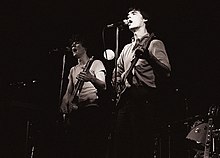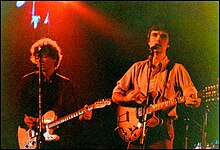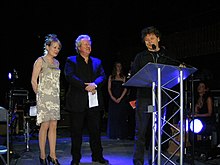
More Songs About Buildings and Food is the second studio album by American rock band Talking Heads, released on July 14, 1978, by Sire Records. It was the first of three albums produced by collaborator Brian Eno, and saw the band move toward an increasingly danceable style, crossing singer David Byrne's unusual delivery with new emphasis on the rhythm section composed of bassist Tina Weymouth and her husband, drummer Chris Frantz.
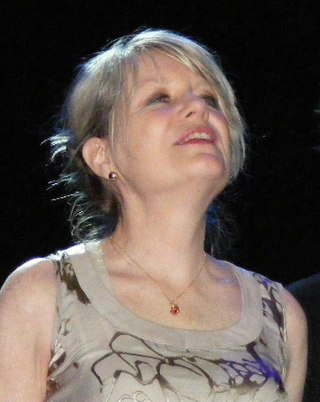
Martina Michèle "Tina" Weymouth is an American musician, singer, songwriter, and a founding member and bassist of the new wave group Talking Heads and its side project Tom Tom Club, which she co-founded with her husband, Talking Heads drummer Chris Frantz. In 2002, Weymouth was inducted into the Rock and Roll Hall of Fame as a member of Talking Heads.

Remain in Light is the fourth studio album by the American rock band Talking Heads, released on October 8, 1980, by Sire Records. Produced by Brian Eno, his third album with the band, the audio was recorded at Compass Point Studios in the Bahamas and Sigma Sound Studios in New York during July and August 1980.
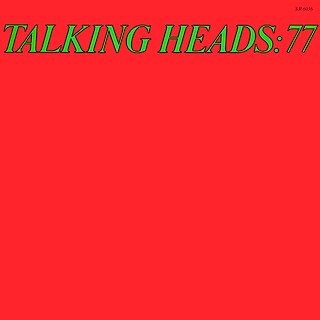
Not to be confused with Talking Heads '77

Fear of Music is the third studio album by American new wave band Talking Heads, released on August 3, 1979, by Sire Records. It was recorded at locations in New York City during April and May 1979 and was produced by Brian Eno and Talking Heads. The album reached number 21 on the Billboard 200 and number 33 on the UK Albums Chart. It spawned the singles "Life During Wartime", "I Zimbra", and "Cities".

Tom Tom Club is an American new wave band founded in 1981 by husband-and-wife team Chris Frantz and Tina Weymouth and as a side project from Talking Heads. Their best known songs include the UK top 10 hit "Wordy Rappinghood" and the US top 40 hit "Genius of Love", both from their 1981 debut album, and a cover of The Drifters' "Under the Boardwalk" that reached the UK top 30.
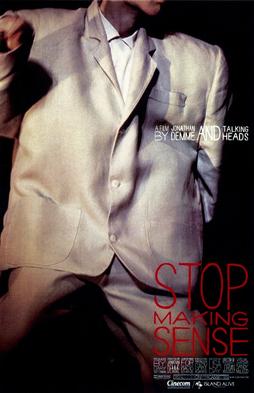
Stop Making Sense is an independently produced 1984 American concert film featuring a live performance by the American rock band Talking Heads. Directed by Jonathan Demme, it was shot over four nights at Hollywood's Pantages Theatre in December 1983, when Talking Heads were touring to promote their 1983 album Speaking in Tongues. Stop Making Sense includes performances of the early Talking Heads single, "Psycho Killer" (1977), through to their most recent hit at the time, "Burning Down the House" (1983). It also includes songs from the solo career of frontman David Byrne and by Tom Tom Club, the side project of drummer Chris Frantz and bassist Tina Weymouth.
Charton Christopher Frantz is an American musician and record producer. He is the drummer for both Talking Heads and Tom Tom Club, both of which he co-founded with wife and Talking Heads bassist, Tina Weymouth. In 2002, Frantz was inducted into the Rock and Roll Hall of Fame as a member of Talking Heads.

Speaking in Tongues is the fifth studio album by American rock band Talking Heads, released on June 1, 1983, by Sire Records. After their split with producer Brian Eno and a short hiatus, which allowed the individual members to pursue side projects, recording began in 1982. It became the band's commercial breakthrough and produced the band's sole US top-ten hit, "Burning Down the House", which reached No. 9 in the Billboard Chart.

Boom Boom Chi Boom Boom is the third studio album by Tom Tom Club, released in 1988. It includes a cover of the Velvet Underground's "Femme Fatale", with David Byrne, Lou Reed, and Jerry Harrison. The track "Suboceana" was released as a single in the UK in late 1988 and received some radio airplay. In the US, a 12-inch single of the song was released, which featured a remix by Marshall Jefferson, and contains the track "Devil, Does Your Dog Bite". That song is a bonus on the Japanese issue of the album that has the original 10 songs. "Challenge of the Love Warriors" is played over the ending credits of Mary Lambert's 1987 mystery thriller Siesta though it is not included on the soundtrack album, also released in 1987, from Miles Davis and Marcus Miller.

"This Must Be the Place (Naive Melody)" is a song by new wave band Talking Heads. The closing track of their fifth studio album Speaking in Tongues, it was released in November 1983 as the second and final studio single from the album; a live version would be released as a single in 1986. The lyrics were written by frontman David Byrne, and the music was written by Byrne and the other members of the band, Chris Frantz, Tina Weymouth and Jerry Harrison.
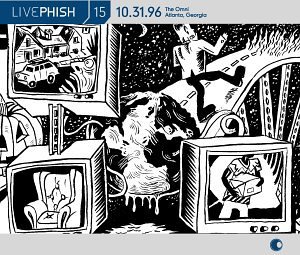
Live Phish Vol. 15 was recorded live at The Omni in Atlanta, Georgia, on Halloween night, 1996.

"Once in a Lifetime" is a song by the American new wave band Talking Heads, produced and cowritten by Brian Eno. It was released in January 1981 as the lead single from Talking Heads' fourth studio album, Remain in Light (1980), through Sire Records.

No Talking, Just Head is the only studio album by the Heads, a band composed of Jerry Harrison, Tina Weymouth, and Chris Frantz of Talking Heads, joined by a variety of guest singers. Released in October 1996, the project was commercially and critically unsuccessful. The band members would go on to pursue other musical interests.

Storytelling Giant is a 1988 compilation album of music videos by Talking Heads during the 1980s. The videos are linked by real people telling stories from their lives; the stories have no logical connection to the videos.

"Life During Wartime" is a song by the American new wave band Talking Heads, released as the first single from their 1979 album Fear of Music. It peaked at #80 on the US Billboard Pop Singles Chart.
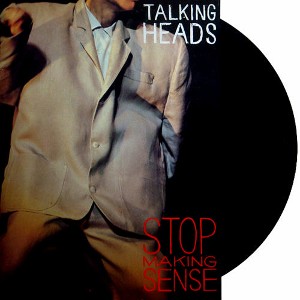
Stop Making Sense is a live album by American rock band Talking Heads, also serving as the soundtrack to the concert film of the same name. It was released in September 1984 and features nine tracks from the film, albeit with treatment and editing. The album spent over two years on the Billboard 200 chart. It was their first album to be distributed by EMI outside North America.

"I Zimbra" is a song by American new wave band Talking Heads, released as the second single from their 1979 album Fear of Music.

Live from Austin, Texas is a live album released by rock musician David Byrne, released on New West Records on October 2, 2007 on CD and DVD. The songs were recorded during Byrne's 2001 tour in support of Look into the Eyeball at a date for the KLRU television show Austin City Limits. Except for the first 4 songs the quartet was accompanied by the Austin-based tango string sextet Tosca.

"Cities" is a single, released in 1980, by the American new wave band Talking Heads. It is the fourth track on the 1979 album Fear of Music.

